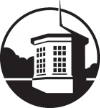As an intentional community guided by the spirit of cooperation and mutuality, Haverford presents a fertile proving-ground for our students’ acquisition of the collaborative skills, habits, and temperament needed for success in the dynamic future that awaits them. Accordingly, in order to enhance the College’s curricular opportunities we envision a number of exciting co- curricular vehicles that will bring together faculty and students across the divisions to undertake creative collaborations. While arising from each of the three constellations, these structures—which will begin as pilot programs, continuing only if there is clear evidence of success and sufficient resources—will not limit their interests or their participants to those defined by the programs enumerated above.
- The Innovation Incubator. A ten-week summer program in which students from the sciences, social sciences, humanities, and arts will form teams to jointly explore research problems in an atmosphere of entrepreneurial invention. Mentored by alumni/ae conversant both with specific areas under exploration and with entrepreneurial techniques, skills, and strategies—and gently guided by supportive but not suffocating faculty oversight—students will be given living stipends and modest funding to develop scientific, commercial, artistic, community, and activist projects with potential for ‘real-world’ application. A small number of these projects might be selected for further support during the following academic year so that they can advance to an early phase of implementation (possibly under the guidance of an “entrepreneurial/artist/activist-in-residence”). We anticipate that the VCAM and a renewed Magill will be key locations for these shared explorations.
- The Public Policy Forum. A project that will encourage students to produce a policy brief or proposal in the fall semester then join together to host and participate in a spring symposium involving faculty and external experts drawn from government, NGOs, and academia. The Forum would be well suited to students studying in such programs as Environmental Studies, Health Studies, Education, Political Science, area studies, Economics, Cities, Sociology, Anthropology, and Peace, Justice, & Human Rights and will take advantage of our felicitous location between Washington and New York, and our extensive network of policy-engaged alumni. In addition to providing students experience with building consensus in a policy-‐making process, the Forum will offer a medium for forming partnerships that can generate future opportunities for students such as internships and training in specific areas of interest.
- The Council on Area and Transnational Studies. Keyed to the third of our constellations, the Council would develop programs of lectures, symposia, exhibitions, readings, screenings, and public conversations among faculty, students, and visitors in order both to highlight features of each area of study and to probe areas’ relationships as a form of transnational inquiry. The Council would also provide students who have gained international experience through CPGC’s array of internships opportunities to connect that experience to their academic pursuits by helping to shape and manage Council programming. Finally, the Council would serve as a mechanism for area studies participants to forge programming, including possibly courses, in transnational studies that put regional concerns and knowledges into conversation with one another.
- Campus as a Living Laboratory. The natural resources of the Haverford campus provide opportunities for fieldwork in support of coursework and scholarship, particularly in the natural sciences and Environmental Studies but also across the many disciplines that address issues of sustainability, landscape, and environment. These academic interests are complemented by growing community attention to sustainability and local agriculture—elements of applied environmental ethics reflected in a recent student proposal to add a greenhouse structure as an anchoring facility for environmentalism at Haverford. While great energy has been devoted to understanding environment in rural and urban settings, Haverford’s suburban location provides a distinctive context in which to undertake this work. In addition to institutional support for the greenhouse and related activities, a coordinating group of those whose work bears out the College’s commitment to environmental responsibility—faculty, student groups, Facilities Management, Arboretum, CPGC, and others—could help the College identify new synergies across our curricular and physical landscapes, and support a richer array of programming built around the living laboratory that is Haverford’s physical environment.
Of special importance for the meaning and success of these forums is their readiness to leverage and extend strengths of major College resources: the Centers, the natural campus, and the renovation of key academic spaces, most especially Music, the Old Gym, and Magill. The Centers provide what we might call the conceptual space within which latter-day transdivisional collaboration thrives in innumerable forms. The natural and built environments offer the literal spaces—fieldwork sites, research locales; classrooms; studios; media labs; screening rooms; pop-up galleries; etc.—through which emerging technologies combine with traditional resources to form new kinds of intellectual and inventive hubs for shared discovery and making. Taken together, these dynamic capital investments will give vivid reality to Haverford’s ideal of the “campus (as) classroom.”
